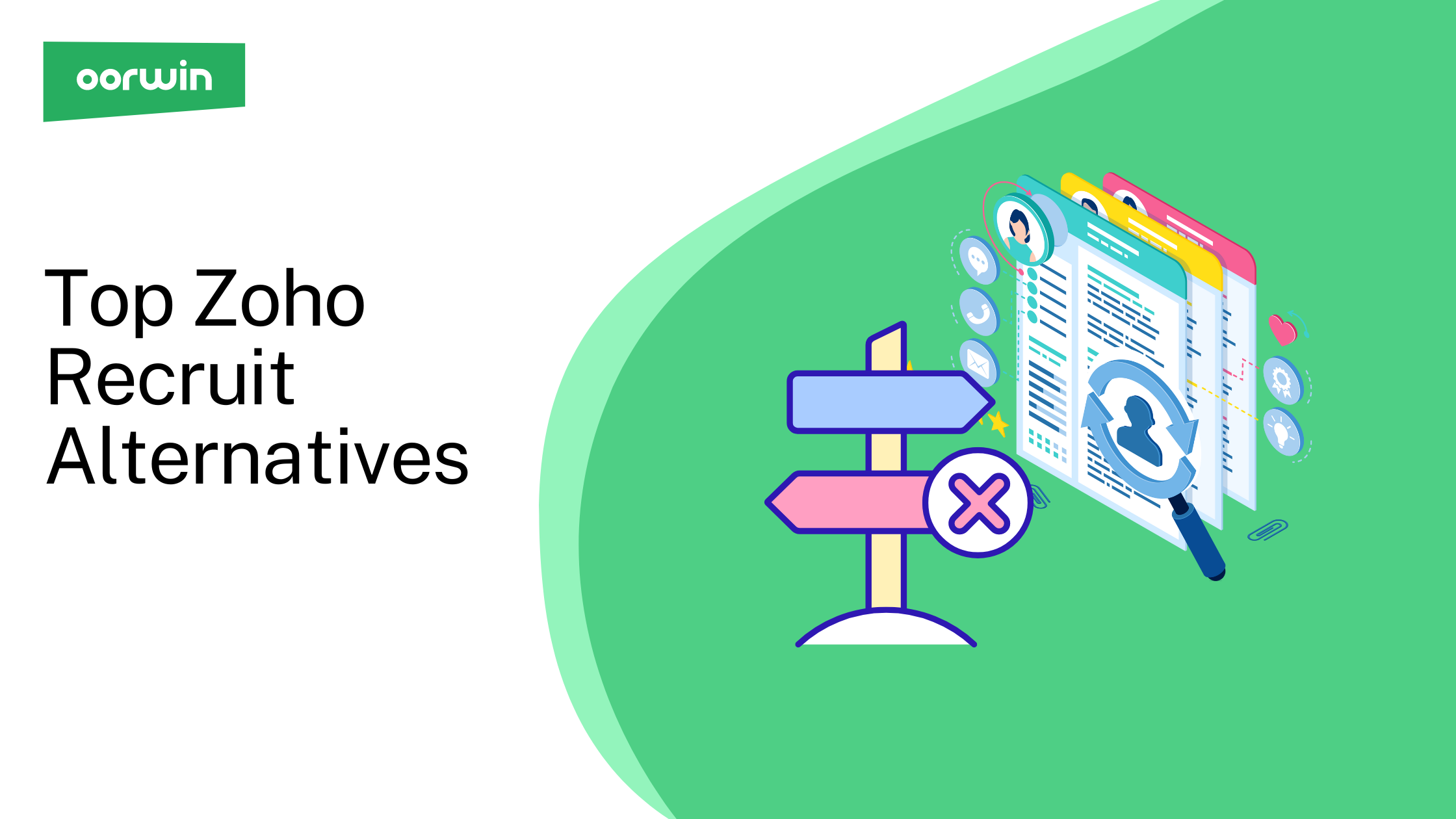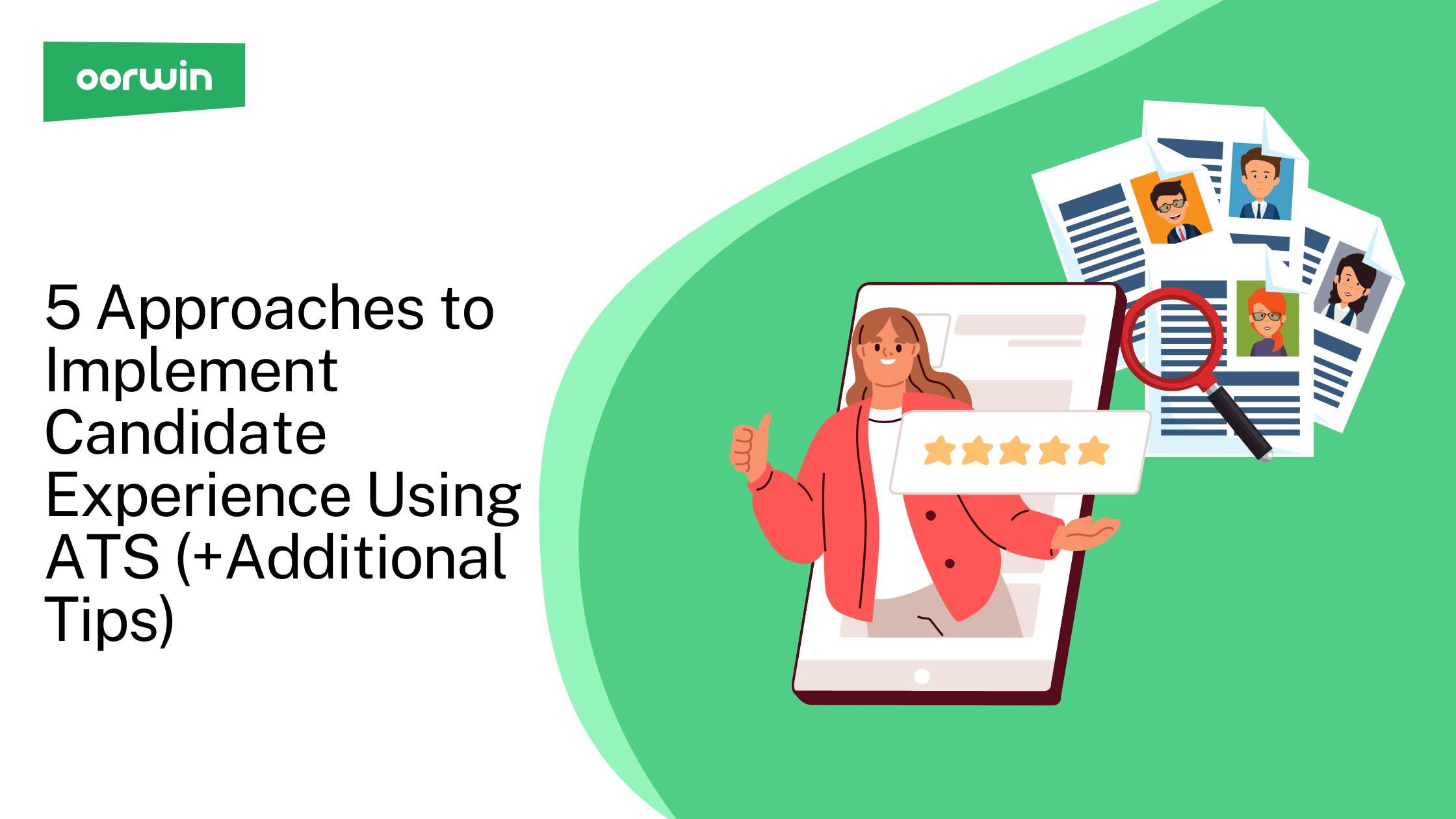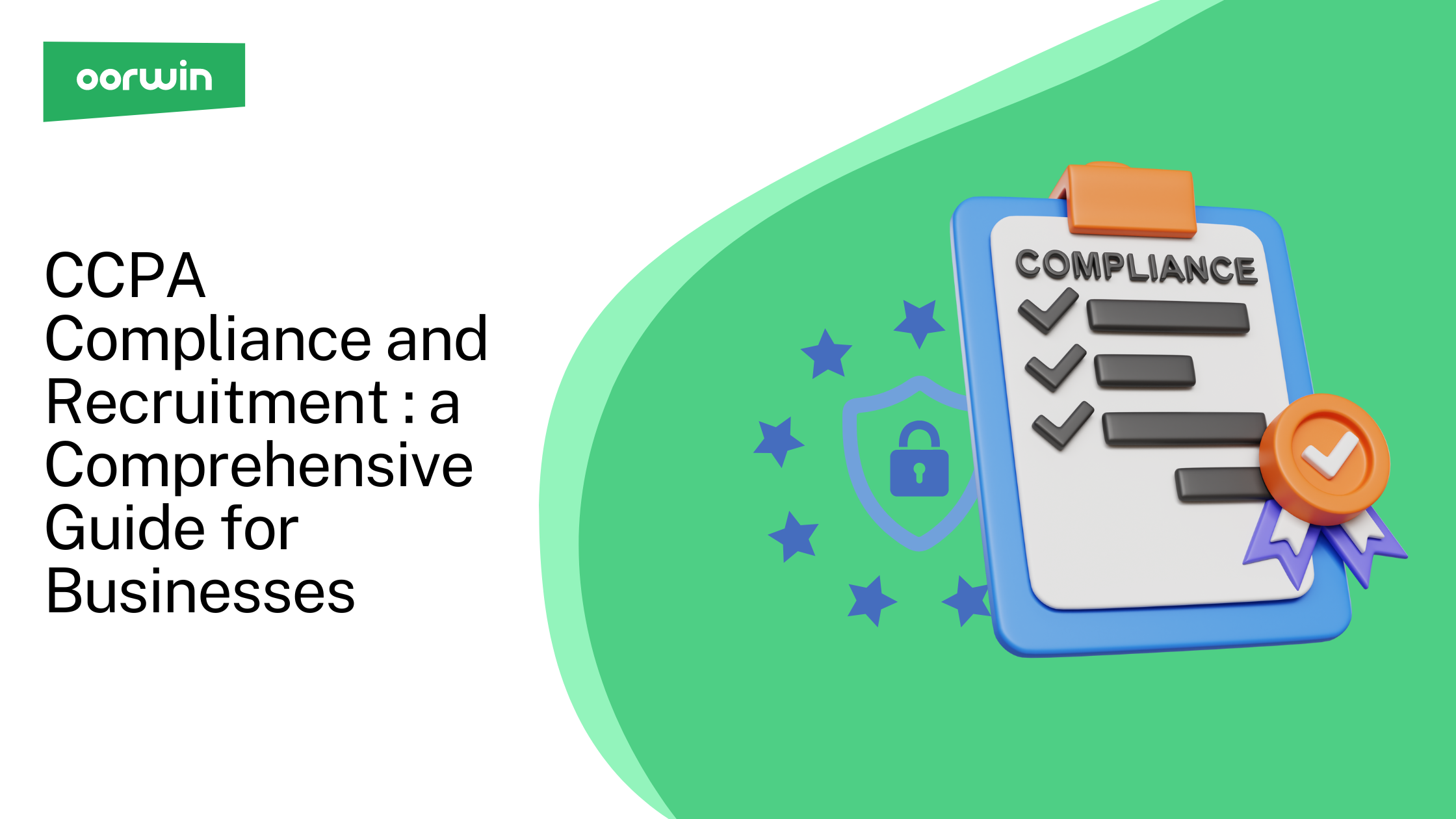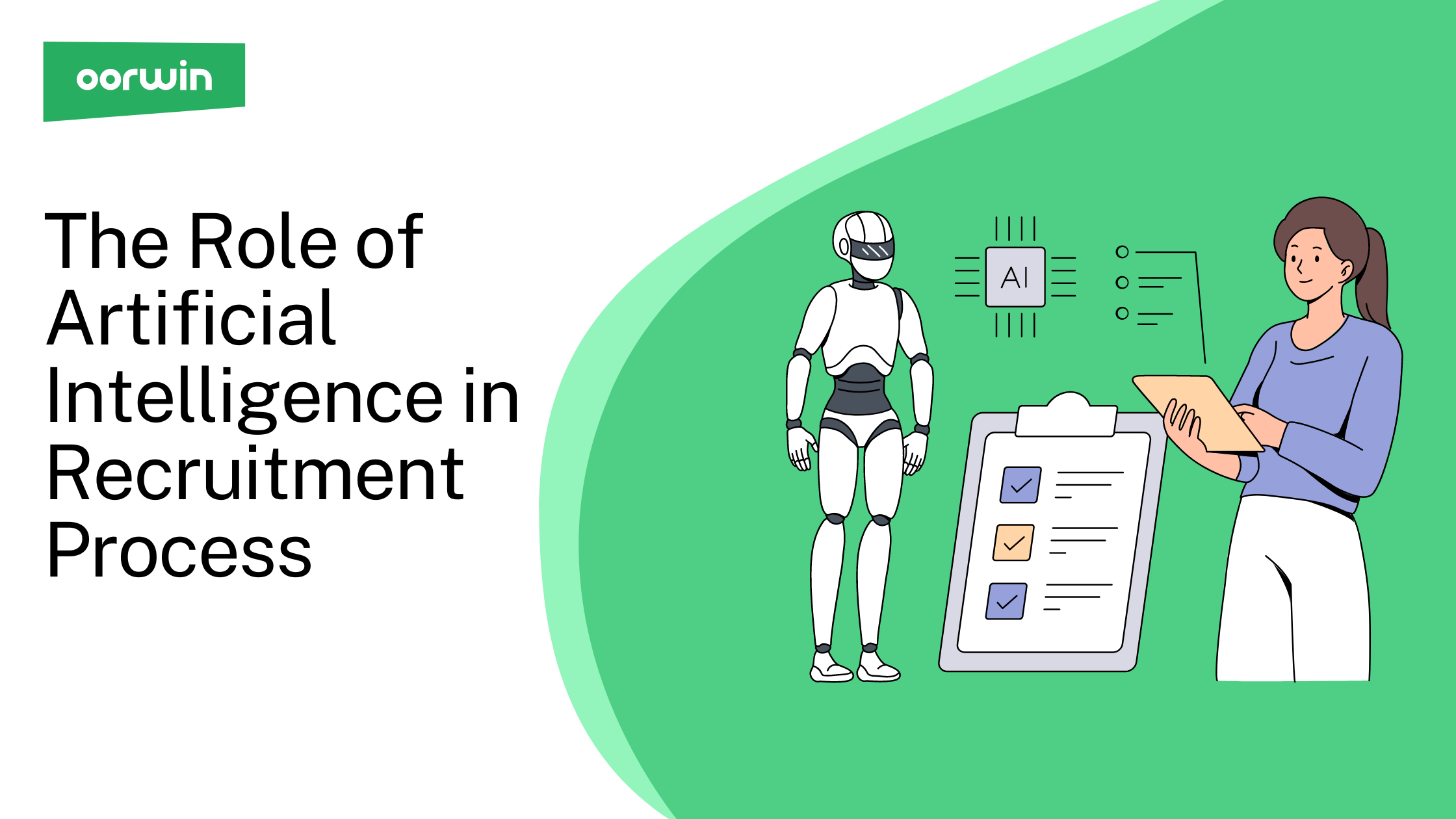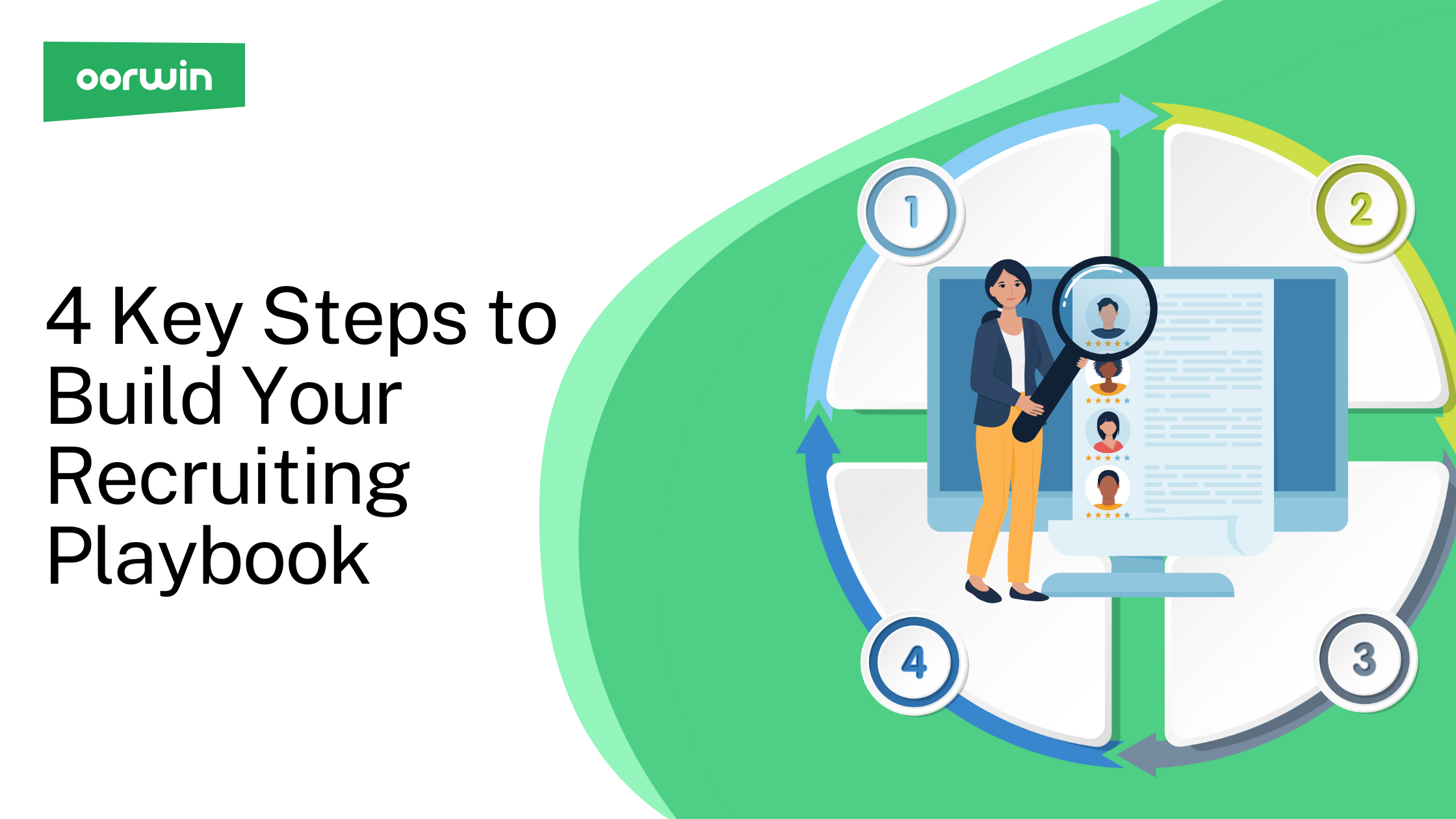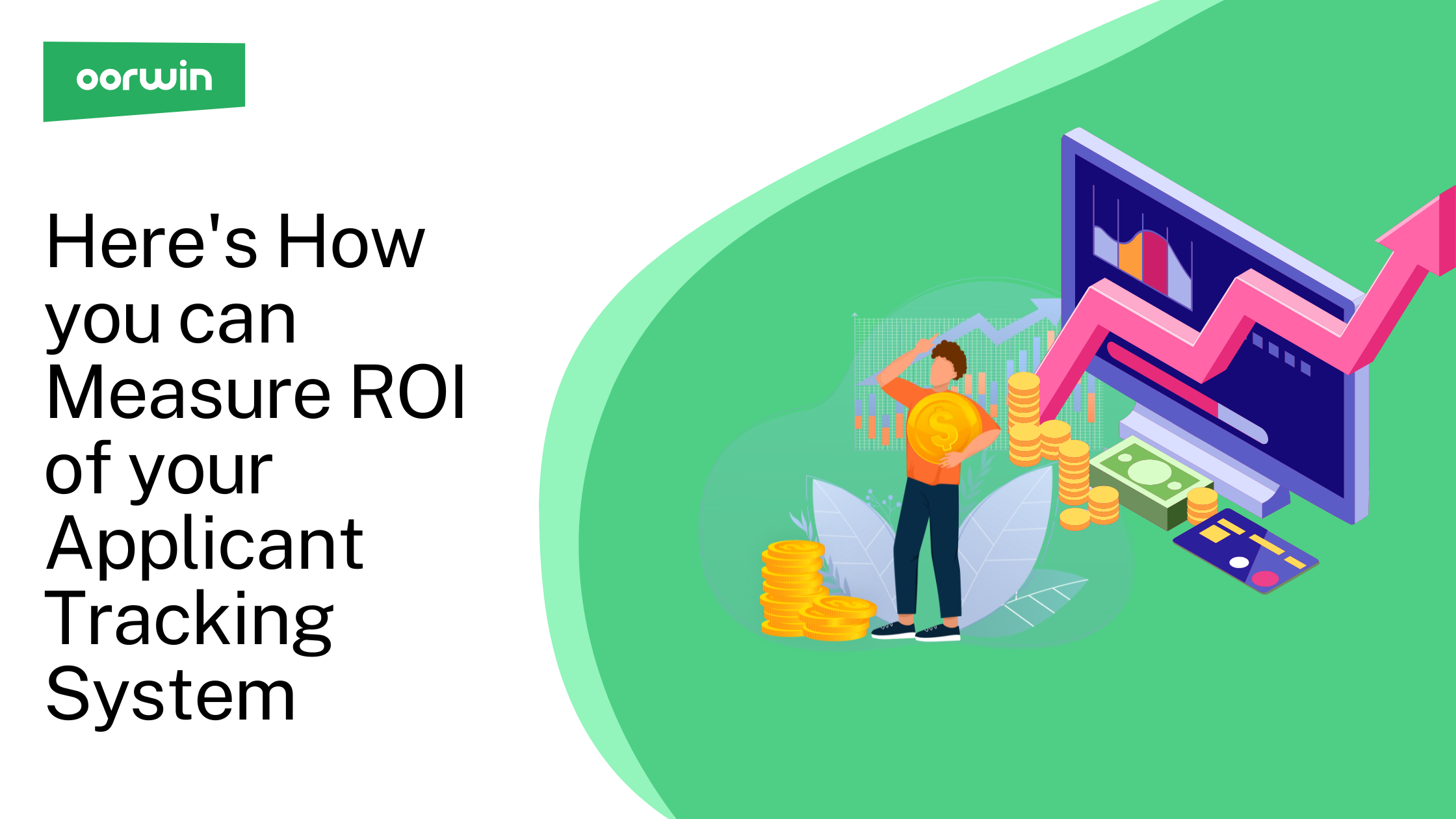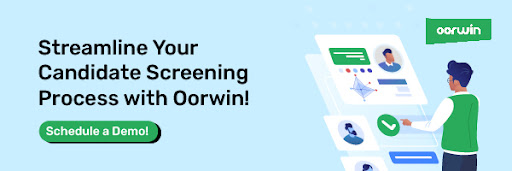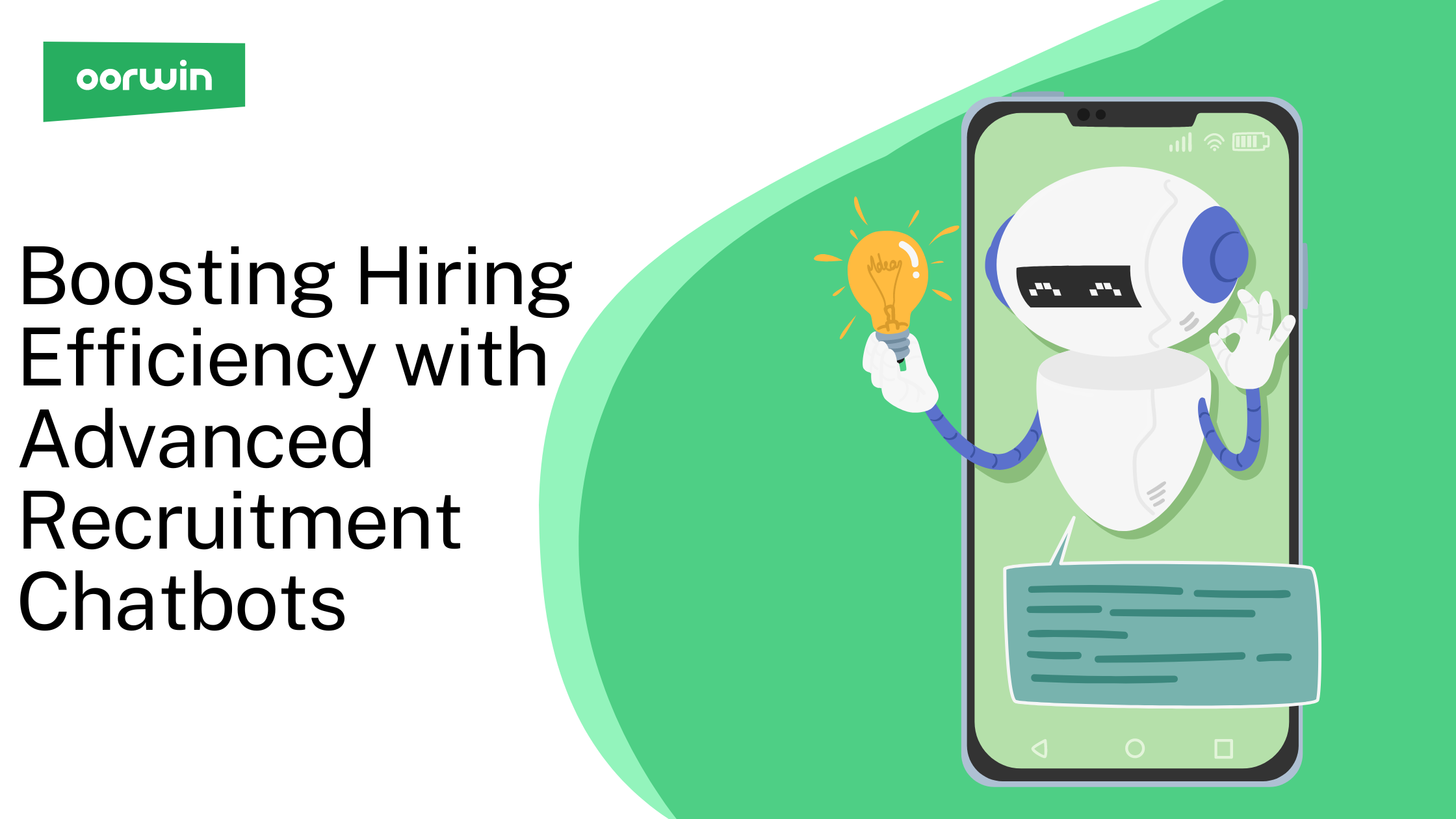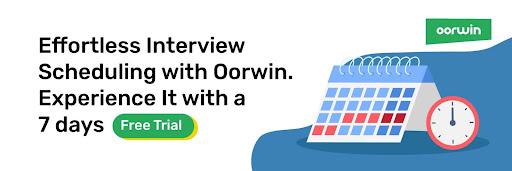Top 10 Alternatives to Zoho Recruit for Streamlining Your Hiring Process
In the competitive landscape of recruitment software, Zoho Recruit has carved a niche for itself with its comprehensive features designed to streamline hiring processes. However, businesses continually seek Zoho alternatives to meet recruitment needs and challenges. This blog delves into the strengths and weaknesses of Zoho Recruit and introduces ten viable Zoho alternatives for businesses to consider in 2024.
Overview of Zoho Recruit
Zoho Recruit is an applicant tracking system designed to streamline the recruitment process. It offers automation, candidate sourcing, and collaboration tools. Ideal for businesses of all sizes, it aims to simplify hiring through a comprehensive suite of features, making it a popular choice among recruiters.
Advantages of Zoho Recruit
- Comprehensive Feature Set: Zoho Recruit includes tools for sourcing, tracking, and communicating with candidates, making it a one-stop recruitment solution.
- Integration Capabilities: Businesses can seamlessly integrate Zoho products with external services suite, enhancing workflow efficiency.
- Customization: Zoho Recruit offers extensive customization options to tailor the system to specific organizational needs.
- User-Friendly Interface: Zoho Recruit has a clear and intuitive user interface, making navigation and operation straightforward for all skill levels. This ensures that teams can get up to speed quickly without extensive training.
- Automation Tools: Zoho Recruit has powerful automation capabilities that streamline repetitive tasks such as email communications, resume parsing, and interview scheduling. This not only saves time but also reduces the chances of human error, enhancing the overall efficiency of the recruitment process.
Disadvantages of Zoho Recruit
- Performance Issues with Large Data Volumes: Users have reported slowdowns and performance hiccups when handling large volumes of data or when multiple processes run simultaneously, which can significantly hinder fast-paced recruitment environments.
- Complex Pricing Structure: Zoho Recruit’s pricing model can be difficult and confusing for some users, with various tiers and add-ons that make it challenging to determine the exact cost upfront, potentially leading to unexpected expenses.
- Limited Customization in Lower Plans: While Zoho Recruit offers customization, the extent of what you can customize is significantly limited in the lower-priced plans. This restriction can be a barrier for small businesses needing more tailored solutions without a high budget.
- Occasional Bugs and Glitches: Users have reported rare software bugs and glitches that can disrupt the recruitment process. Although customer support is generally responsive, these issues can cause delays and frustration.
- Inadequate Reporting Features in Basic Plans: The more advanced reporting and analytics features are reserved for higher-tier plans, leaving users with limited insights into their recruitment processes.
Top 10 Alternatives to Zoho Recruit to Choose from in 2024
Exploring Zoho Recruit alternatives is key to optimizing your hiring process. Let’s dive into the top 10 alternatives, focusing on their unique offerings and how they compare in pricing.
1. Oorwin
Oorwin is a comprehensive recruitment solution integrating AI to enhance candidate sourcing and engagement. It uniquely combines recruitment, sales, and human resources functionalities within a single platform. This synergy promotes better collaboration among teams, leading to improved hiring outcomes. Oorwin’s user-friendly interface simplifies the recruitment process, making it accessible for all users, regardless of their technical expertise. Its robust analytics tools also help make data-driven decisions, a must-have for any competitive business.
Building on its innovative foundations, Oorwin incorporates advanced machine learning algorithms to tailor job recommendations and optimize candidate matching. This automation extends to workflow management, where tasks such as resume screening and interview scheduling are streamlined, significantly reducing the hiring time. Moreover, Oorwin’s scalability ensures it is well-suited for businesses of all sizes, from startups to large enterprises, allowing for seamless growth and adaptability in a dynamic job market.
2. Job Diva
Job Diva is a cloud-based ATS and talent management solution that stands out for its advanced sourcing capabilities. It offers many features, including a patented search algorithm that quickly helps recruiters find the best candidates. Job Diva integrates seamlessly with major job boards and social media platforms, expanding the reach of your job postings. Its real-time analytics and reporting tools provide valuable insights into your recruitment process, helping to identify bottlenecks and improve efficiency.
Job Diva also excels in fostering a more connected and intuitive recruitment experience through automated communications and updates, making each candidate feel valued and informed. The system adapts to the unique workflows of different teams, ensuring that it fits naturally into your existing processes.
| Feature | Oorwin | JobDiva |
|---|---|---|
| AI Integration | Yes | Yes |
| CRM Capabilities | Yes | Yes |
| ATS | Yes | Yes |
| HRMS | Yes | No |
3. Manatal
Manatal introduces an innovative approach to recruitment with its cloud-based ATS, designed to simplify and accelerate the hiring process. It leverages artificial intelligence to recommend the best candidates for each position, enhancing the effectiveness of your recruitment efforts. Manatal’s standout feature is its deep integration with social media and professional networks, enabling recruiters to reach a wider pool of candidates. The platform also offers advanced CRM capabilities, ensuring a seamless candidate experience from initial contact to hire.
Manatal further enriches the recruitment process by providing an intuitive dashboard that allows recruiters to track and manage candidate interactions effortlessly. Manatal’s commitment to user-friendly design also means that even those with minimal technical skills can maximize its benefits.
| Feature | Oorwin | Manatal |
|---|---|---|
| AI Integration | Yes | Yes |
| CRM Capabilities | Yes | Yes |
| ATS | Yes | Yes |
| Onboarding | Yes | Yes |
4. Bullhorn ATS
BullHorn ATS offers a comprehensive candidate and client management solution, making it a strong Zoho alternative. Its robust integration capabilities with LinkedIn and other recruitment tools streamline the recruitment process, enhancing productivity. BullHorn’s customizable interface allows for a tailored user experience catering to your team’s needs. Additionally, its cloud-based nature ensures accessibility from anywhere at any time, facilitating collaboration among recruiters and stakeholders for more efficient decision-making.
Bullhorn ATS further humanizes the recruitment experience by enabling recruiters to easily keep candidates informed and engaged throughout the hiring process, creating a more personal touch. Its flexible configuration also allows teams to adapt features to fit their hiring strategies, fostering a more collaborative and dynamic environment.
| Feature | Oorwin | Bullhorn ATS |
|---|---|---|
| AI Integration | Yes | Yes |
| CRM | Yes | Yes |
| ATS | Yes | Yes |
| Onboarding | Yes | Yes |
5. Greenhouse
Greenhouse is renowned for its effectiveness in optimizing recruitment strategies through comprehensive reporting and analytics tools. This platform aids organizations in making informed hiring decisions by providing insights into each stage of the recruitment process. Greenhouse’s commitment to inclusivity and diversity is reflected in its structured interviewing and bias reduction features, ensuring a fair and equitable hiring process. Its user-friendly interface and integrations with a wide range of tools make it a top choice for companies looking to improve their recruitment outcomes.
Greenhouse also excels at proactive talent acquisition. Its sophisticated sourcing tools allow recruiters to connect with potential candidates before they apply. The platform features automated reminders and follow-ups to ensure no candidate slips through the cracks during the hiring cycle. This streamlines the recruitment process and greatly improves the efficiency of talent management.
| Feature | Oorwin | Greenhouse |
|---|---|---|
| AI Integration | Yes | Yes |
| CRM Capabilities | Yes | Yes |
| ATS | Yes | Yes |
| Seamless Integrations | Yes | Yes |
6. BambooHR
BambooHR, primarily known for its human resources management capabilities, offers inadequate ATS for small to medium-sized businesses. Its recruitment module is designed to be intuitive, simplifying the hiring process from job posting to onboarding. BambooHR’s strength lies in its seamless integration with the broader HR suite, enabling a smooth transition from candidate to employee. The platform’s focus on providing a positive applicant experience helps attract top talent, making it a valuable Zoho alternative.
BambooHR really shines with its easy-to-navigate interface, which simplifies things for both HR staff and applicants. It’s packed with features like automated workflows, which reduce paperwork and speed up hiring. Plus, the customization options let businesses tweak the application process to fit their unique requirements and branding, improving the overall experience for applicants.
| Feature | Oorwin | BambooHR |
|---|---|---|
| AI Integration | Yes | Yes but limited |
| CRM Capabilities | Yes | No |
| ATS | Yes | Yes |
| Onboarding | Yes | Yes |
7. SmartRecruiters
SmartRecruiters is a modern talent acquisition suite that creates a compelling candidate experience. It offers a range of marketing tools to attract top talent, including a customizable career site and integration with job boards and social media. SmartRecruiters’ intuitive interface simplifies the recruitment process, making it accessible and efficient. The platform’s emphasis on collaboration enables teams to collaborate seamlessly, ensuring no candidate slips through the cracks. Its powerful analytics provide insights to refine your recruitment strategy continuously.
SmartRecruiters also strongly focuses on inclusive hiring practices, ensuring recruitment strategies reach diverse audiences. This is complemented by features designed to remove unconscious bias, promoting a fair evaluation of all candidates. The platform’s mobile compatibility allows recruiters to manage hiring processes, enhancing responsiveness and engagement with candidates.
| Feature | Oorwin | SmartRecruiters |
|---|---|---|
| AI Integration | Yes | Yes |
| CRM Capabilities | Yes | Yes |
| ATS | Yes | Yes |
| Job Boards Integrations | Yes | Yes |
8. iCIMS Talent Cloud
iCIMS Talent Cloud is a comprehensive recruitment solution that offers tools to attract, engage, and hire the best candidates. It stands out for its robust marketplace of integrations, allowing for seamless connectivity with other HR technologies. iCIMS prioritizes a streamlined candidate experience, from application to onboarding, ensuring high levels of engagement. Its advanced reporting and analytics capabilities enable recruiters to track performance and optimize their strategies, making it a strong contender for those seeking a Zoho alternative.
The platform also provides resources and expert guidance about recruitment solutions, industry changes, and the future of talent. It is a valuable partner for organizations looking to stay ahead in the ever-evolving talent landscape.
| Feature | Oorwin | iCIMS Talent Cloud |
|---|---|---|
| AI Integration | Yes | Yes |
| CRM Capabilities | Yes | Yes |
| ATS | Yes | Yes |
| VMS | Yes | No |
9. Breezy
Breezy HR simplifies recruitment by automating time-consuming tasks, such as scheduling interviews and sending emails. Its user-friendly interface ensures an efficient workflow, making it easy for teams to collaborate and make timely hiring decisions. Breezy’s focus on candidate experience is evident in its personalized communication and onboarding tools, helping to engage top talent. Additionally, its comprehensive reporting features offer valuable insights into the effectiveness of your hiring process, enabling continuous improvement and optimization.
Breezy HR also offers additional features such as candidate automation, comparisons, job and offer approvals, multiple recruiting pipelines, live video meetings, interview self-scheduling, employee referrals, and external recruiter support. It also provides a mobile app for hiring decisions on the go and supports integrations with various HR and recruiting tools.
| Feature | Oorwin | Breezy |
|---|---|---|
| AI Integration | Yes | Yes |
| CRM Capabilities | Yes | Yes |
| ATS | Yes | Yes |
| Integrations | Yes | Yes |
10. Ceipal ATS
Ceipal ATS is a powerful Zoho alternative that leverages artificial intelligence to streamline recruitment. Designed for businesses of all sizes, it excels in automating tasks like resume parsing, candidate screening, and interview scheduling, significantly reducing the hiring time. Its scalable architecture ensures that Ceipal ATS grows with you as your business grows, offering customizable workflows and detailed analytics to optimize your recruitment strategy. The platform’s commitment to innovation is evident in its continuous updates and feature enhancements, ensuring a future-proof solution.
Ceipal ATS is designed to integrate seamlessly with multiple job boards and social media, helping to expand the reach of job postings and attract a diverse pool of applicants. With this ATS, recruiters can use technology to streamline hiring and build stronger, more engaging relationships with candidates.
| Feature | Oorwin | Ceipal ATS |
|---|---|---|
| AI Integration | Yes | Yes |
| CRM Capabilities | Yes | Yes |
| ATS | Yes | Yes |
| Seamless Integrations | Yes | Yes |
Final Thoughts
Choosing the right recruitment software is crucial for streamlining your hiring process and ensuring you attract and retain top talent. While Zoho Recruit offers comprehensive features, the alternatives presented provide unique advantages that better suit your needs. Whether you prioritize AI-driven candidate sourcing, seamless integration capabilities, user-friendly interfaces, or powerful analytics, a solution can elevate your recruitment strategy. When selecting a platform, it’s essential to consider your organization’s specific challenges and goals. Investing the time to evaluate these options can significantly improve your recruitment process, enhancing your hires’ efficiency and quality.
Oorwin stands out in the crowded recruitment software market by smartly blending advanced AI tools with user-centric features. It revolutionizes hiring with AI-driven functionalities such as candidate scoring, job matching, and insightful analytics, ensuring each match is precise and well-informed. The platform’s robust automation frees up time by streamlining repetitive tasks while customizable workflows and various plugins, including email integrations and ChatGPT, tailor the experience to meet specific organizational needs.
Oorwin also broadens candidate reach through effective multi-channel marketing and provides deep insights with custom analytical dashboards. It is an essential tool for companies looking to enhance their recruitment processes and outcomes. Visit Oorwin today to learn more, request a demo, and see how it can transform your recruitment process.
FAQ
Why Consider Alternatives to Zoho Recruit in 2024?
As the recruitment landscape evolves, exploring alternatives to Zoho Recruit can provide access to new features, better cost-efficiency, or a user experience more aligned with your specific HR needs and workflows. This ensures your hiring process remains competitive and efficient.
What Should I Look for in a Zoho Recruit Alternative?
Key factors to consider include ease of use, integration capabilities with other HR tools, scalability, customer support quality, and specific features such as AI-driven analytics, customizable workflows, and comprehensive candidate sourcing tools. Assessing these can help you find a platform that fits your organizational requirements.
Why is Oorwin the best alternative for Zoho Recruit?
Oorwin stands out as the best Zoho Recruit alternative due to its AI-driven insights, seamless ATS, CRM, and HRMS integration, enhancing recruiter productivity and decision-making in a user-friendly platform.
